Modular: A First Look at Starfinder 1: “OMG! All Your Trope Are Belong To Us”
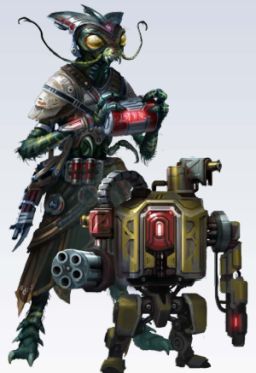
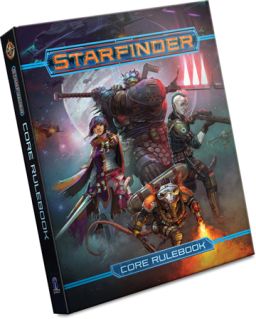
“Dad, we can’t get the Starfinder combat system working…”
“Look, Son, it’s a D20 system, so Armor Class reduces the chance of being hit, rather than absorbs damage.”
“OK. I get it now! You’re the best, Dad!”
(Tousles hair) “That’s what Dad’s are for, Son.”
OK it didn’t quite go like that. For a start, I did not in fact tousle my 13-year-old son’s hair since (a) it’s shoulder length and he gets cross if you tangle it, and (b) he’s 13. Even so, it was a “life’s full circle” Country and Western moment of the same order as when non-geeks teach their kids to throw a rabbit or skin a baseball or whatever.
However, Kurtzhau was indeed encountering a D20 system for the first time, the engine at the heart of Starfinder, Paizo’s new Science Fantasy (it uses that term in the text!) system, with which he’s pretty much fallen in love. The blurb says it all.
The Starfinder Roleplaying Game puts you in the role of a bold science-fantasy explorer, investigating the mysteries of a weird and magical universe as part of a starship crew. Will you delve for lost artifacts in the ruins of alien temples? Strap on rune-enhanced armor and a laser rifle to battle undead empires in fleets of bone ships, or defend colonists from a swarm of ravenous monsters? Maybe you’ll hack into the mainframe of a god-run corporation, or search the stars for clues to the secret history of the universe or brand new planets to explore. Whether you’re making first contact with new cultures on uncharted worlds or fighting to survive in the neon-lit back alleys of Absalom Station, you and your team will need all your wits, combat skill, and magic to make it through. But most of all, you’ll need each other.
Inspired by my son’s enthusiasm, I decided to take a look myself…
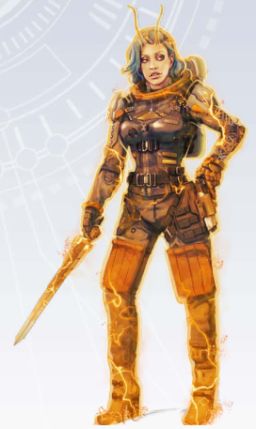
Though a game in its own right, Starfinder is the Science Fiction/Fantasy sequel to Pathfinder — you can even transfer characters over — so there’s nothing particularly remarkable or hard about the mechanics or the rules as rules. This is a good thing, since I think the hobby is mature enough that we don’t need innovation unless it supports innovative play of the kind we enjoy.
Like a lot of ambitious systems, the shear volume of the rules volume is intimidating. However you quickly realize that most of the rules present options applying after first level, and that players will keep track of their own feats and special abilities. The best way to start GMing is probably to buy the introductory Adventure Path, which is what Kurtzhau did. A little playtesting with a mate on a Wednesday evening and he was GMing for five on the Saturday.
So Starfinder passes the Stranger Things Threshold for Ease of Play by High School Kids.
It’s also well-presented and well-authored in a beautifully illustrated and solidly bound book which has an index and contents down the outer edge of each page, so you know where you are or can find where you need to be.
The core rule book covers what you’d expect in terms of character generation, magic, equipment, combat, space combat — which looks intriguingly in the same ballpark as X-Wing — and the setting itself. It doesn’t list any monsters — you need the Alien Archive for that — but does tell you roughly how to make them up.
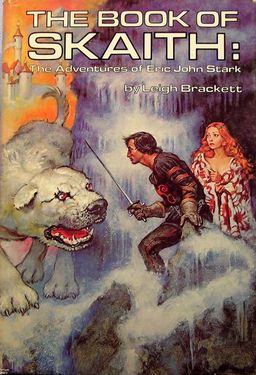
Reading Starfinder is frankly mind blowing, like discovering a new music genre, or the massive back catalog of an author you love. It feels exciting and original, significant even. At the same time, it has a fireside familiarity.
Imagine the tabletop game of a Leigh Bracket novelisation of the movie of Mass Effect as re-imagined by Edgar Rice Burroughs after he read too-many Warhammer 40K novels, but filmed by Ken Loach based on a script by George Lucas derived from a treatment by Frank Herbert and Clark Ashton Smith inspired by coffee with William Gibson after he’d played Stellaris.
It’s a setting where technology and magic don’t just co-exist, they interact, and the magic itself belongs in space, with powers and spells derived from the stars and black holes and the stuff of the universe. Though you can feel the influences, it’s by no means a pastiche. It does not, for example, emulate Jack Vance so much as present a universe in which one might imagine him setting a story. Using Starfinder, one could, for example, hit similar notes to Simon R Green’s Deathstalker series.
In short, the Paizo team under James L Sutter, have done for Science Fantasy what Dungeons and Dragons did for “traditional” Fantasy, but using a necessarily different approach.
Let’s flashback to the dawn of our hobby…
“Let me go! I belong in Lyrical Fantasy!”
“Shut it pointy-ears! Go sit next to the fellow with the furry trousers and horned helmet”
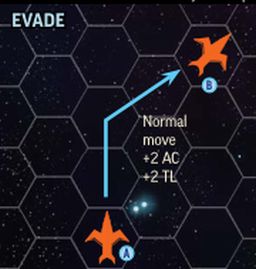
The creators of the original Dungeons and Dragons notoriously press-ganged all the Fantasy archetypes they found lying around and formalized them into tropes the way the dwarves in The Hobbit speak about the need to have “a Burglar” as if that were a Thing with Capital Letters.
This was easy because, since the Fantasy genre of the time drew from a common wellspring of legend, fairy tale and history, the archetypes were built from generic traditional components even when they were author-specific. With the possible exception of hobbi, um, halflings, nobody owned their IP and originality was not an artistic issue.
Sure, Rhialto the Marvellous was an archetypal magician (of a certain sort), but he was still just a magician. Thus, D&D gives us obviously Vancian mages, Howardesque barbarians, Dickensian thieves, Leiberesque fighters, Tolkienesque elves, and dungeons that, with the addition of steroids, make a feature out of a recurring trope from Howard, Leiber and Tolkien.
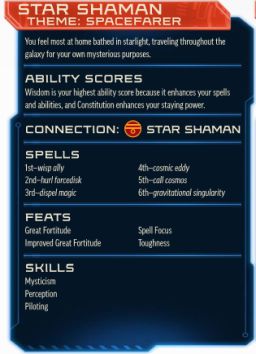
This gathering of archetypes probably explains the longevity of the D&D family, including the OSR movement and Pathfinder. It offers familiar archetypes that people not only want to play, but also know how to play. Even nowadays, you can introduce a 9 year old to Fantasy roleplaying game by saying, “It’s like playing Lego Hobbit…”
Clearly Paizo set out to do something similarly ambitious with Starfinder; they wanted to create another epoch-defining sandbox for the imagination. However, unlike in the 1970s, they couldn’t just send out sailors with clubs because Science Fiction’s archetypes are made of IP!
Whereas Fantasy archetypes exist in traditional story worlds, Science Fiction archetypes need a purpose-built a story world, and somebody with lawyers usually owns those. So, Space Marines just aren’t going to take the field against Jedi in any commercial product (unless Disney buys Games Workshop…). Worse, in Science Fiction, the archetypes tend to overshadow the tropes. So, for example, Sandworm is an Archetype, but anything that looks like a Sandworm is still a Sandworm, and therefore not original enough to be taken seriously.
Starfinder therefore couldn’t grab familiar archetypes. Instead it had to go for variations on familiar tropes, but did so in a way that was original enough to produce its own archetypes, ones I suspect people will cosplay and appropriate for screennames, explore through fan art and fiction, and consume not just through the game itself, but through tie-in novels and spin-off mini-games. It achieves this through shear creativity, supported by tried-and-tested mechanics, and firmly rooted in a boldly conceived setting, which is what I’m going to talk about in my next post.
However, before I sign off, let’s take a moment to appreciate the Star Shaman (right).
“Star Shaman. Mmmmm.”
OK I’m hooked. However, I think Kurtzhau can have the monopoly on GMing it for now…
M Harold Page is the Scottish author of The Wreck of the Marissa (Book 1 of the Eternal Dome of the Unknowable Series), an old-school space adventure yarn about a retired mercenary-turned-archaeologist dealing with “local difficulties” as he pursues his quest across the galaxy. His other titles include Swords vs Tanks (Charles Stross: “Holy ****!”) and Storyteller Tools: Outline from vision to finished novel without losing the magic. (Ken MacLeod: “…very useful in getting from ideas etc to plot and story.” Hannu Rajaniemi: “…find myself to coming back to [this] book in the early stages.”)